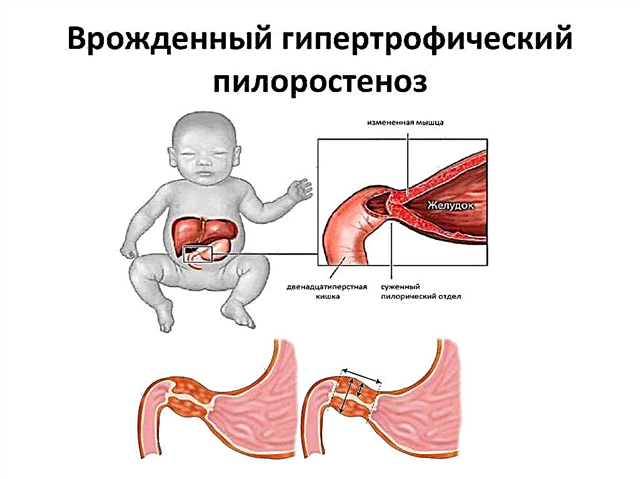
It can be difficult for babies to introduce complementary foods, but if the baby is born prematurely, acquaintance with new food should be carried out even more carefully. Despite the fact that premature babies need more nutrients to catch up with their peers in development, their digestive system matures over a longer period than term babies.

Key recommendations
- Before the introduction of complementary foods, it is recommended to feed the baby with breast milk, and mom's nutrition should be balanced. If it is impossible to breastfeed for the baby, a special mixture is selected, designed for the needs of premature babies.
- The earliest acceptable period for complementary feeding is called 4 months., although most doctors recommend that new products be introduced no earlier than 6 months of age.
- A new product is given to a premature baby in smaller quantitiesthan when meeting new foods in term babies.
- After complementary foods at least 8 months of age, it is recommended giving breast milk or formula for the baby to drink new food.
- The first complementary foods for prematurity are usually cereals., and then the child is introduced to vegetable and fruit purees.
- If a premature baby is sick, has an allergy or dysbiosis, it is better to wait with complementary foods until the baby is stable.

How to calculate the age of introduction of complementary foods
It is best to determine the age at which the baby should get acquainted with new products, based on the lack of time before the moment when the baby was supposed to be born full-term. For example, if the baby was born 1 month ahead of schedule, by 6 months (the age when it is recommended to start feeding full-term babies) a month is added, respectively, babies are given the first portions of complementary foods at 7 months of age.
If childbirth occurred two months earlier than the expected date, it is worth waiting up to eight months with complementary foods.
The video, prepared by the Union of Pediatricians of Russia, describes in detail how to properly feed the baby and at what age complementary foods should be introduced.
Sequence of product introduction
- It is preferable to choose buckwheat as the first porridge. Next, the baby is introduced to rice and corn porridge. They are boiled in water and diluted with a mixture or mother's milk.
- After cereals, the baby is offered vegetables that should be local... It is optimal to start vegetable feed with zucchini and cauliflower, then add carrots to them.
- When porridge replaces one baby feeding and vegetables replaces the other, fruit can be added to supplement one of these feedings. Usually start with green apples and pears, and with good tolerance, then peaches, bananas and prunes are given to the baby.

- Juice is introduced into the diet of a premature baby no earlier than eight months. First, the little ones are given apple juice, then pear juice and a mixture of apple and pear juice, and after that they are gradually introduced to other flavors.
- Meat appears in the diet of a premature baby at 8 months of age... First, the baby is treated to rabbit and turkey, then the baby is offered veal and beef, and then pork and chicken (white meat). Often, mashed meat is added to porridge or vegetable puree.

- When a premature baby turns 8 and a half months old, you can cook vegetable soups, in which, in addition to vegetables, cereals and vegetable oil are added. Such a dish is included in the third feeding, so that in the future it will become a dinner.
- Fermented milk products should appear in the diet of a prematurely born child at 9-10 months. The baby is introduced to baby kefir and yogurt, replacing the fourth feeding. Also at this age, the baby is offered cottage cheese, adding it to fruits or vegetables.
- Eggs are advised to be given to premature babies no earlier than 9 monthsby stirring a small amount of yolk into the vegetable puree. Gradually, the amount of yolk increases until the serving is 1/2 of the yolk.
Fish can be given from 10 months of age, changing its meat 1-2 times a week... First, the baby is offered pike perch and cod, after them - flounder, tuna and saury, as well as hake, pollock and salmon. The fish is baked or boiled, then mashed and added to vegetables.
Complementary feeding table by month
Features of the introduction of complementary foods for children prone to allergies
If a premature baby has a tendency to allergic reactions, acquaintance with complementary foods is transferred to a later period and the following recommendations are taken into account:
- Begin to feed the baby with one-component dishes, for example, with rice porridge or with squash puree.
- A new product is given a try in the morningto note by the end of the day if there was an adverse reaction.
- Introduce per week maximum one new product.
- It is important to keep a diary in which you note all the dishes, eaten by the baby, as well as the state of health of the crumbs and reaction to food.
- If an allergic reaction occurs, then until the manifestations disappear, new products are not introduced.
- For an allergic child under one year old, it is enough to enter 1-2 cereals in the menu, 1-2 types of vegetables and fruits, and one type of meat feed.
- It is important for mom to find out in advance what foods are the most allergenic and introduce them to the baby much later. For example, the introduction of an allergic premature baby into the menu of eggs and fish is laid until one year of age.

Komarovsky's opinion
The feeding scheme of a famous pediatrician is slightly different from traditional recommendations. Komarovsky suggests starting an acquaintance of a child older than 6 months with kefir and cottage cheesebecause these foods are more like mom's milk than cereals and vegetables.
After the introduction of crumbs of kefir mixed with cottage cheese into the menu, at the age of seven months, a popular doctor recommends introducing porridge into the children's diet, cooked in milk. After a month, the baby can be given vegetable soup, and from 9 months, according to Komarovsky, it is time to feed meat. A well-known doctor advises giving fish and yolk from 10 months. Read more about this in the article about complementary foods according to Dr. Komarovsky.



